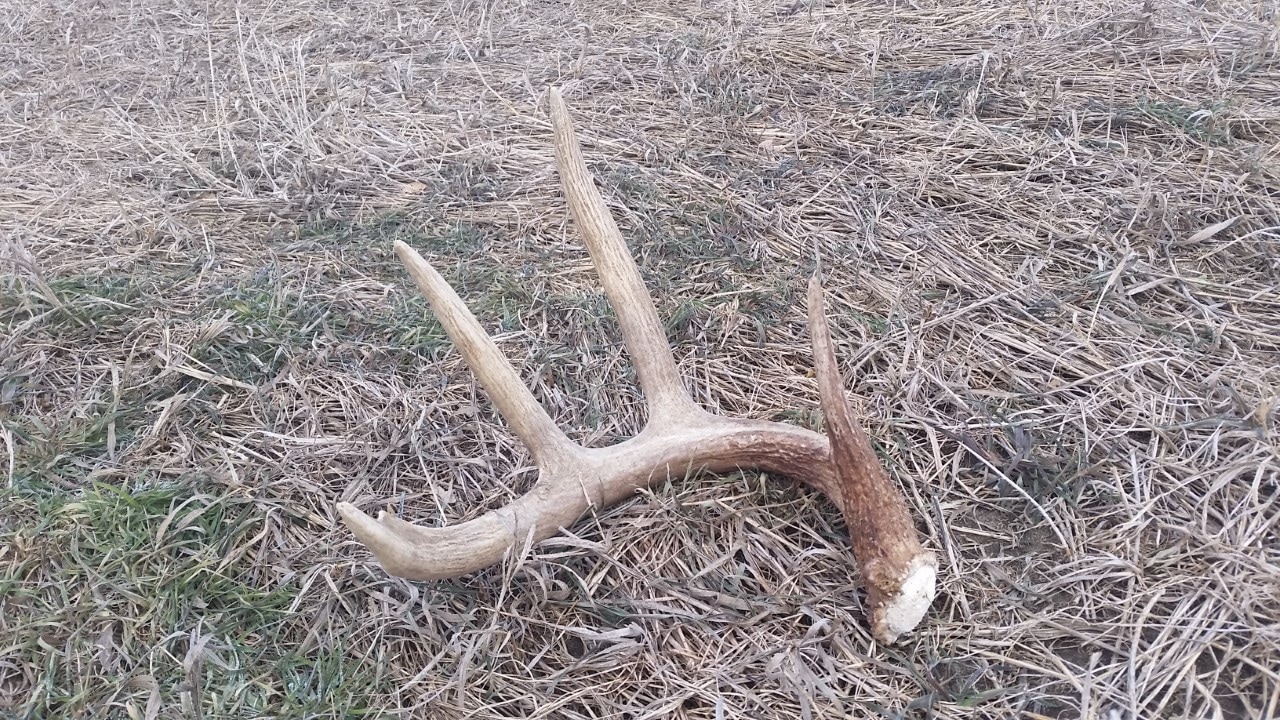First off I want to discuss how antlers fall off. Antlers are essentially dead material once they harden and velvet is rubbed off. They attach to the pedicle which is living bone. This connection is only maintained during high testosterone levels. The combination of the rut being over and photoperiod shortening, testosterone levels begin to diminish. The bone cells known as osteoclast, reabsorbs calcium between the antler and pedicle, weakening the connection resulting in the antler falling off.
Although low testosterone levels and photoperiod changes are the main contributing factor to antler casting there are a number of other factors that can influence the drop. All of these factors relate to some level of stress either in the entire herd or in an individual. As one may expect, nutrition is very important and herds and bucks in great physical condition will likely hold their antlers longer. If you are seeing many of the local bucks dropping antlers earlier than expected there is likely a habitat issue going on. This could be simply caused by an over populated herd, crop failures due to extreme drought, extreme heat or even extreme cold. This year I think weather factors have lead to some increased stress in many parts of Nebraska and South Dakota. We started off with unseasonably warm temperatures into mid to late November. This was followed by snow storm and extreme cold throughout December and January with again unseasonably warm temperatures mixed in between. These weather related stresses could have led to early casting in some areas.
Breeding will also play a factor. If the buck to doe ratio is skewed towards does, and all does are not being bred in the initial rut, then this can leading to prolonged breeding. This causes testosterone levels to stay elevated resulting in longer antler holding. If bucks are frequently fighting, this too will cause elevated testosterone levels, resulting in the holding antlers longer. However, if the buck to doe ratio is nearly even and all the breeding is done in short amount of time this could result in many of the bucks casting early.
However, if you notice only one or two bucks casting early there is likely some sort of stress on that individual deer. This could be due to age, injury, and dominance status. Maybe there is a mature buck on your property and he gets very stressed out from a worsened body condition after a long rut and is having a tough time putting the body reserves back on. This added stress certainly does the deer no good. One of the bucks may have been injured in some fashion either from fighting in the rut, running from predators, hit by a car or many other scenarios. His body taking over trying to heal itself can cause added stress to the individual. In times like this the body will use nutrients where there are most needed. Finally a younger buck may have been “The Boss” on your farm all season, when sometime in the late season a much more dominate buck moved onto the property making him lose dominance. This loss of dominance can result in reduced testosterone levels. All of these factors can lead to individuals casting their antlers early.
In closing there are many factors that can affect the “when” factor of antler casting. I personally think the winter weather has more to do with it than many think. It was the middle of April 2016 when I was drilling some CRP grasses for a client of mine. That morning as started out around the field, I was coming to where a shelter belt and a wooded draw met, when 6 whitetail bucks came running out of the draw. All of these bucks were still holding both sides of their antlers. If you remember the winter before was one of the warmest I can remember. The ground did not freeze, we had maybe half a dozen snow storms, and the snow was melted within a few days of those storms. The deer had very little weather related stress that year and it showed in the number of bucks holding antlers well into the early spring.
Remember to manage today for a better tomorrow!
Brett Kleinschmit


 RSS Feed
RSS Feed
